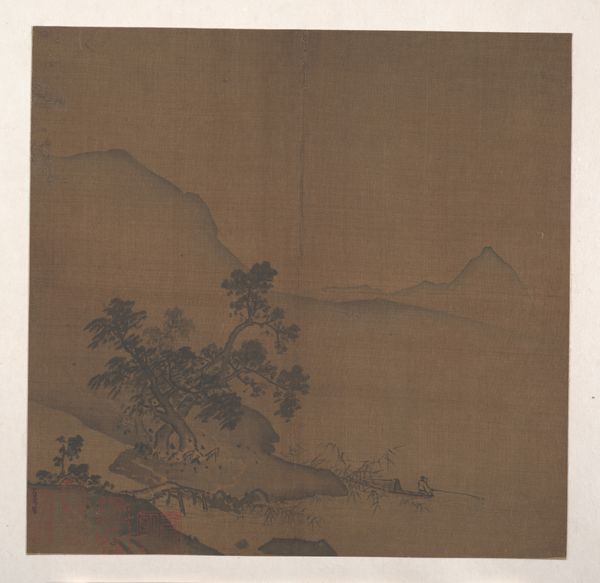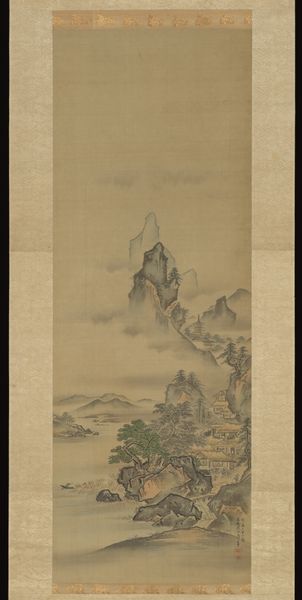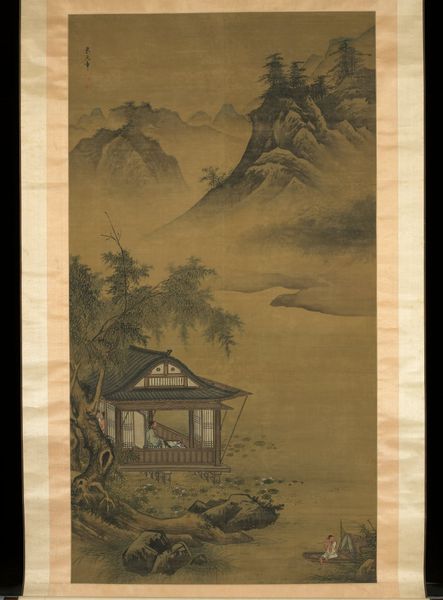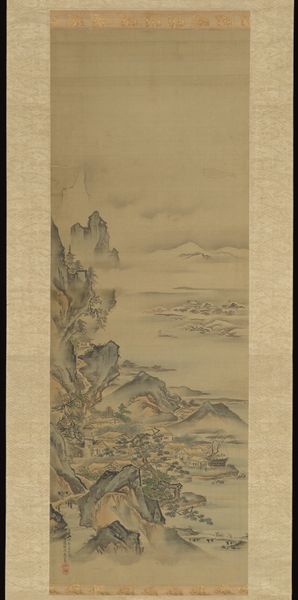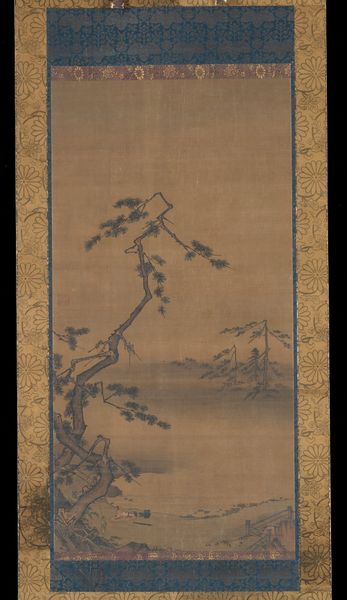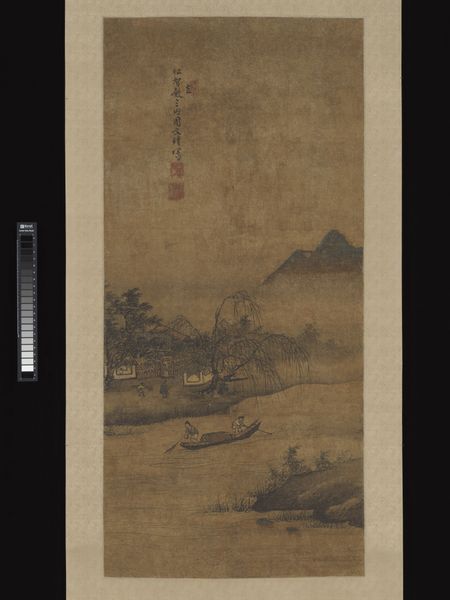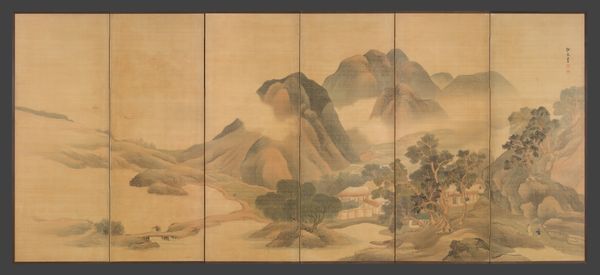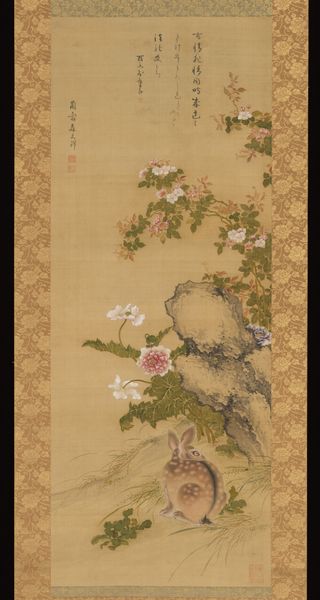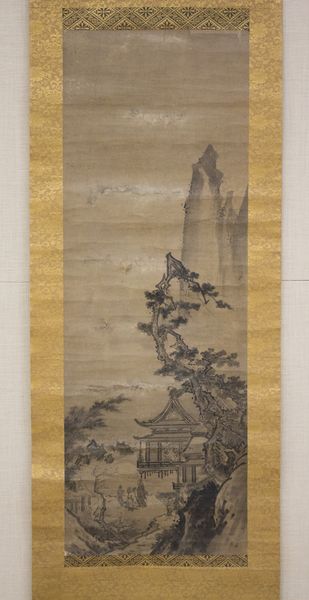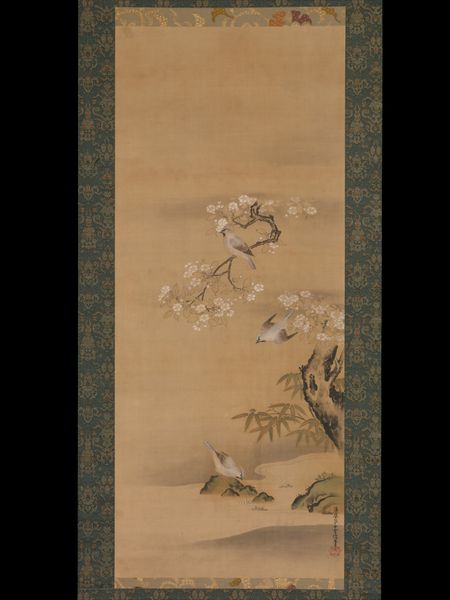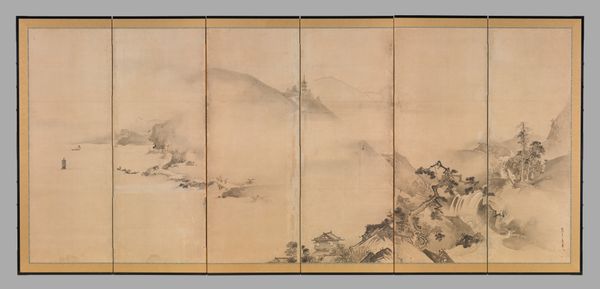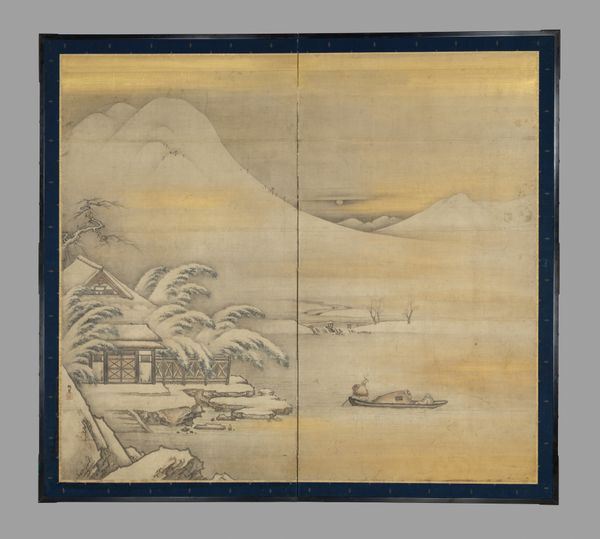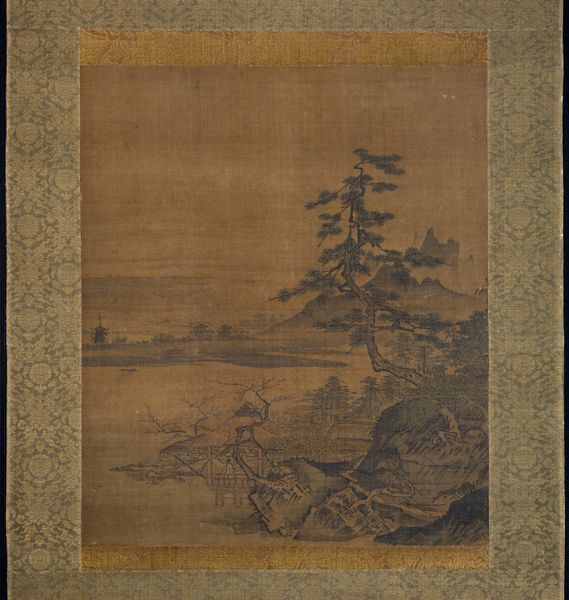
Landscape with Pavilion c. mid 16th century
0:00
0:00
paper, hanging-scroll, ink
#
asian-art
#
landscape
#
japan
#
paper
#
hanging-scroll
#
ink
#
orientalism
#
watercolor
Dimensions: 15 11/16 × 20 1/8 in. (39.85 × 51.12 cm) (image)46 × 24 9/16 in. (116.84 × 62.39 cm) (mount)
Copyright: Public Domain
Sesson Shūkei painted this landscape with ink on silk, capturing a pavilion nestled in the mountains. The pavilion, a recurring motif in East Asian art, serves as more than just shelter. It symbolizes a retreat from the mundane, a space for contemplation and connection with nature. We find echoes of this sentiment in classical Roman villas, designed as sanctuaries for intellectual discourse and respite from civic duties. The mountain, too, is an enduring symbol, appearing across cultures as a place of spiritual elevation, a meeting point between earth and sky. Think of Mount Olympus in Greek mythology or Mount Sinai in the Judeo-Christian tradition. These towering forms engage our subconscious, stirring a sense of awe and reverence. Notice how the artist evokes a feeling of solitude and introspection, inviting us to reflect on our place within the vastness of the natural world, and the ebb and flow of human history. The pavilion and the mountain, as symbols, persist through time, each new iteration enriching their meaning.
Comments
minneapolisinstituteofart almost 2 years ago
⋮
At lower right, a Chinese gentleman riding a donkey and a young attendant on foot head uphill toward a cluster of luxurious buildings framed by pine and willow trees. A friend awaits them in a lakeside pavilion. Standing at the parapet, he gazes out over an expanse of mist, water, and mountain peaks—all suggested by light ink washes and areas of bare silk—toward a distant shore where a solitary fisherman rows his boat. Sesson Shūkei was a Zen priest and painter now best known for his eccentric takes on classical Buddhist themes. The meticulous brushwork and conventional corner-weighted composition of this landscape, however, suggests that it was painted early in Sesson’s career when he was a careful student of classical Chinese painting.
Join the conversation
Join millions of artists and users on Artera today and experience the ultimate creative platform.
